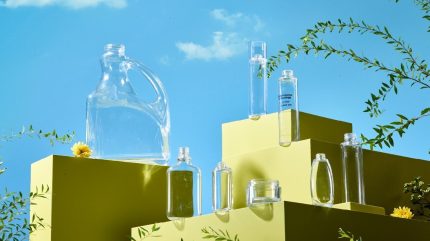
South Korean company SK chemicals has introduced a new copolyester material designed to improve recyclability and moulding versatility for large-sized containers.
Dubbed ‘ECOTRIA CLARO 300’, the material maintains the transparency and chemical resistance of traditional copolyesters while offering enhanced features for extrusion blow moulding (EBM) processes.
The new copolyester is said to offer higher viscosity, even under high-temperature moulding conditions, compared to existing copolyester products.
This quality makes it particularly suitable for EBM moulding, a technique often used for creating large-sized containers.
The EBM method heats extruded plastic tubes and inflates them with air to achieve the desired container shape, necessitating a high-viscosity material that can maintain its form during the process.
Typically, transparent materials such as polyethylene terephthalate (PET) and copolyesters have not been suitable for high-temperature EBM due to insufficient heat resistance and viscosity.
As a result, opaque materials such as polypropylene and PE have been the go-to choices for large-capacity containers.
However, ECOTRIA CLARO 300’s reported ability to withstand EBM moulding conditions and its classification as a recyclable PET material positions it as a potential replacement in the transparent large-capacity container market.
SK chemicals aims to target this market such as those used for water, juice, and other beverages.
The company’s strategy includes expanding copolyester sales within the EBM application market, with a goal of reaching approximately 30,000 tonnes.
SK chemicals green material business head Kim Eung-soo said: “With the launch of ECOTRIA CLARO 300, SK chemicals can now provide a wide range of customised sustainable packaging solutions from cosmetic sample bottles under 100ml to large-capacity beverage containers.
“We will continue to develop technologies that can implement the physical properties and quality of materials needed for injection moulding techniques and various applications, expanding the use of sustainable packaging materials.”




